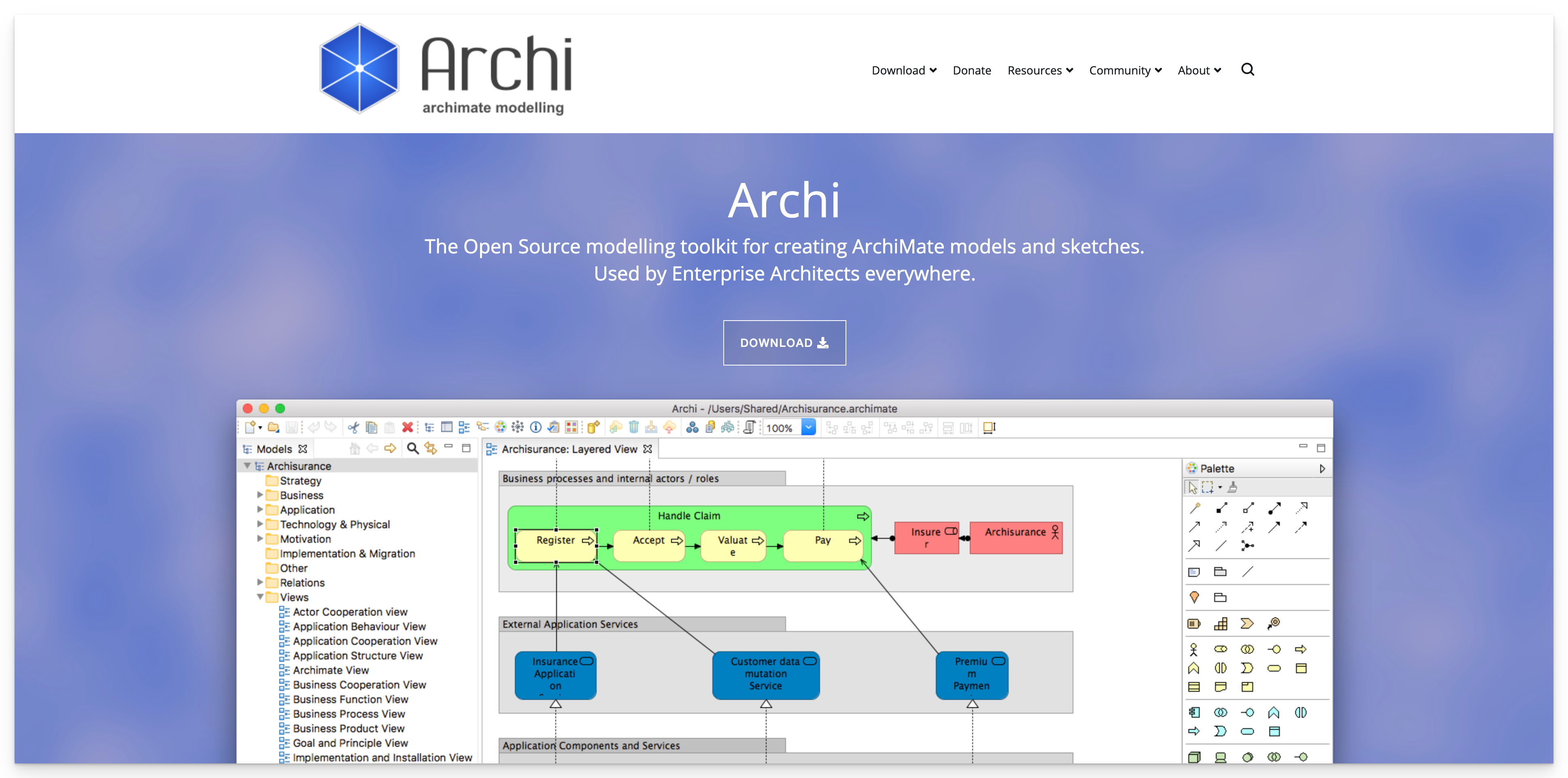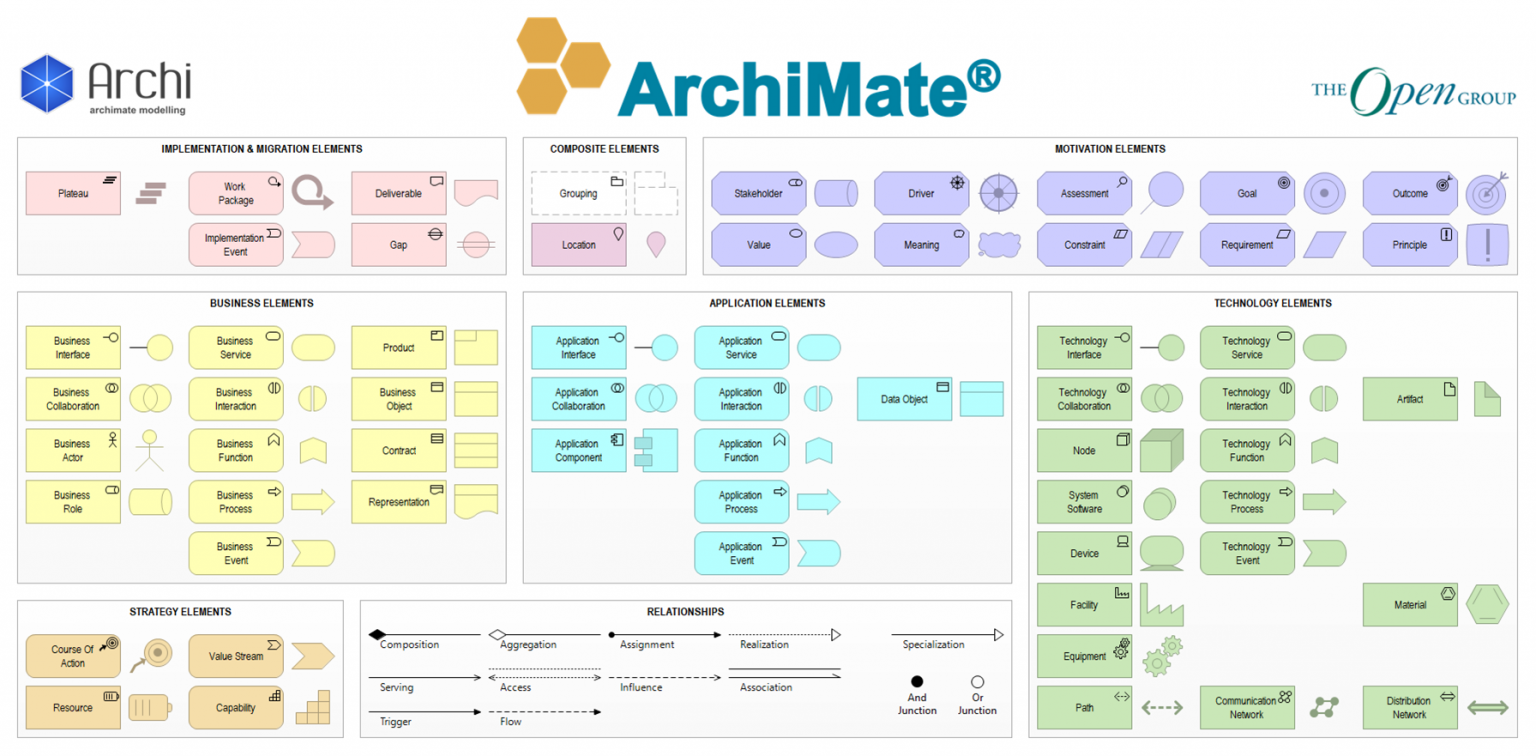ArchiMate: An Enterprise Architecture Modeling Tool

ArchiMate is an open standard enterprise architecture language that provides an efficient way to describe, analyze, and visualize architectural relationships within an organization. Developed by The Open Group, ArchiMate serves as a universal language for Enterprise Architects, enabling better communication, understanding, and coherence.
Defining ArchiMate
With its first version launched in 2004, ArchiMate has undergone several improvements and additions over the years, leading to the release of ArchiMate 3.1 in November 2019. It’s a high-level language, meaning it abstracts many of the complexities inherent to systems, thus providing a clear, bird’s-eye view of the organization’s structure.
The Layers of ArchiMate

ArchiMate adopts a layer-based framework to capture the entire enterprise architecture. It divides the architecture into three main layers:
-
The Business Layer: This is the highest layer, describing business processes, functions, organizational units, and roles. It’s centered around people and their roles within the organization, their behaviors, and the business services they need or provide.
-
The Application Layer: The middle layer focuses on software applications and their interactions. It describes how different software applications support and realize the business services, processes, and functions.
-
The Technology Layer: The lowest layer encompasses hardware and software infrastructure, including physical devices, networks, and systems software. It offers insights into how the technical infrastructure supports or realizes applications.
These layers aren’t standalone silos; they interact with each other, creating a web of relationships and dependencies that ArchiMate can effectively capture and visualize. This interconnected nature of ArchiMate’s layers provides a holistic view of the entire enterprise architecture.
Why You Might Need ArchiMate
The Role of ArchiMate in Enterprise Architecture Frameworks
Although ArchiMate can be used independently, it’s often deployed in tandem with other enterprise architecture frameworks, most notably TOGAF (The Open Group Architecture Framework). TOGAF is a methodology that defines the process for creating, implementing, and managing enterprise architecture. In contrast, ArchiMate is the language used to describe and understand the architecture.
TOGAF provides a high-level approach to design, planning, implementation, and governance of an enterprise’s architecture, yet it does not describe a concrete method for creating models that represent components of the system. This is where ArchiMate comes into play, serving as the de facto modeling language to fill that gap. It visualizes the architectures defined in TOGAF’s ADM (Architecture Development Method).
The Benefits of ArchiMate
The advantages of using ArchiMate are manifold, making it a powerful tool for enterprises to leverage:
-
Standardization: ArchiMate promotes a standardized approach to describing, analyzing, and visualizing enterprise architecture. This consistency minimizes ambiguity, making communication across different teams within the organization more effective.
-
Comprehensive Perspective: ArchiMate’s layered structure offers a holistic view of the enterprise, helping to identify potential issues, dependencies, and opportunities for improvement across all layers of the organization.
-
Informed Decision Making: By visually representing the relationships between various business elements, ArchiMate facilitates strategic decision-making and planning. It enables stakeholders to visualize the potential impact of strategic changes, thus supporting risk management and scenario planning.
-
Business-IT Alignment: ArchiMate helps to align business objectives with IT strategy, ensuring that IT changes and innovations support business goals. This alignment is critical for achieving strategic objectives and enhancing operational efficiency.
-
Improved Governance: ArchiMate supports governance activities by providing clear insights into how various organizational elements are associated, how they interact, and how changes in one element might impact others.
-
Accelerated Time-to-Market: By improving communication and understanding among stakeholders, ArchiMate can expedite decision-making processes and thus reduce the time-to-market for new initiatives or changes.
In conclusion, ArchiMate plays an instrumental role in enterprise architecture, fostering streamlined communication, coherent decision-making, and effective alignment of business and IT goals. Its ability to provide a complete view of the enterprise architecture landscape, along with its standardized approach, makes it an essential tool for organizations navigating the complex digital business ecosystem.
As digital transformation accelerates, tools like ArchiMate will continue to be critical for organizations striving to stay competitive, innovate, and grow. It’s not just about mapping and modeling anymore; it’s about understanding the organization in a way that enables strategic change and drives future success.
ArchiMate User Guide: DOWNLOAD
OpenGroup Archimate 3.2 Spec, find HERE